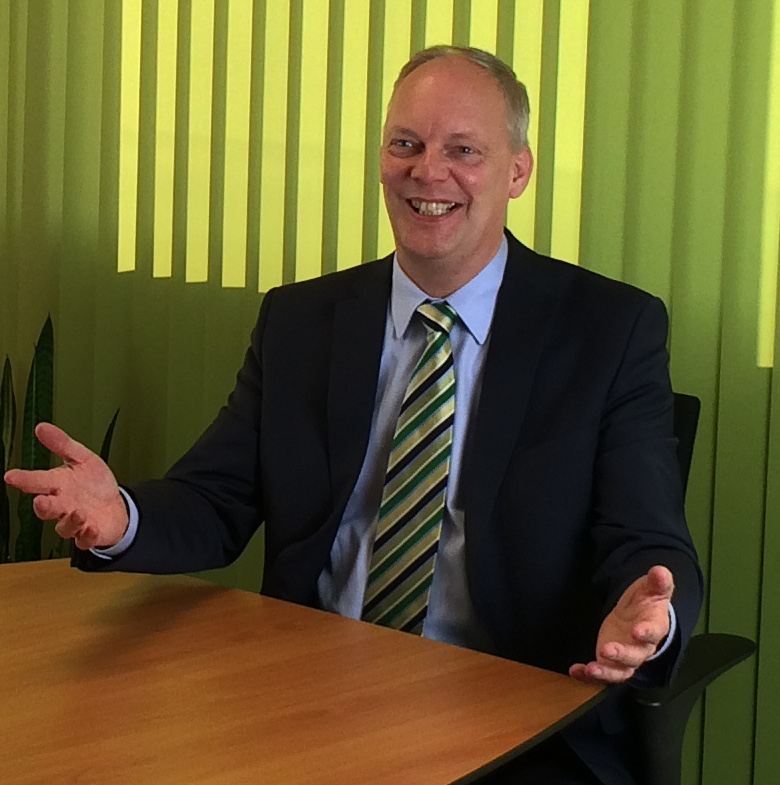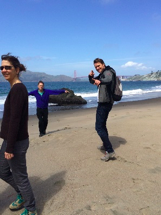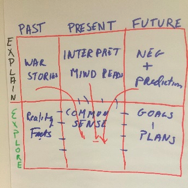Testimonials
-

Janneke Maas - Organization & Team Coach
As an organizational and team coach, I coach a sector within a larger organization. One of the goals of the sector is to lead as a management team (MT) more as one team, instead of each for himself. Below I explain a specific moment from the process.
During the first meeting we work on the listening climate. In doing so, we provide a method for the MT to work with immediately the next day. The method we choose, Functional Subgroups - the core methods of SCT - is to teach the group to connect with each other and bring in a difference.
We start in triplets, where MT members tell each other what is going on in their department. The exercise is a stepping stone to connecting and building on each other in a conversation with the entire MT.
Some reflections on the group discussion: Karin, with a laugh: ‘I thought I was pretty good at listening, but in this exercise I experience that it's more difficult than I thought. ’ Maurice joins in: ‘Yes, it is really active listening and therefore we got to the heart of the matter quicker and we were not beating around the bush’. Ronald follows, ‘I noticed that we reach depth in the conversation sooner. ‘ To which Johan points out, ‘I found it quite difficult: it takes the momentum out of a conversation.’ With some irritation in his voice, he says, ‘Sometimes I just want to say something and then I can't.’ Irene adds; ‘Yes, I noticed that sometimes after summarizing, I didn't remember exactly what I wanted to say myself.’
The reflection shows that the ‘connect first, then build on’ provokes different reactions for the team. The team audibly breathes a sigh when we point out that you don't always communicate through connecting, and we laugh about it. For example, you apply it when there is a difference of opinion.
Two weeks after the meeting, we hear from the manager that a comment about talking through each other and listening to each other again is being made more often in MT meetings and beyond. The team wants to continue with the coaching program.
As a team coach, I see that teams can handle more complex problems when they learn to Functional subgroups. That gets me excited. The more I develop my skill in SCT, the more I experience that connecting with a team in introducing Functional subgroups (namely a big difference) is an art in itself.
*) participants' names are fictitious.
-

David Reis - Therapist
My wife, Marianne, and I have used SCT methods in our marriage. When we first heard about “role locks”-complementary role dynamics that result in conflict-we recognized them immediately. Fairly regularly we would get locked into conflicts that we could not get out of except by taking a break, going on our own and then coming back as if nothing had happened. That was fine in the short run-it prevented arguments. However, in the long run, tensions built up and when something triggered another conflict-often something quite small like the tone of voice of a reply-the deep anger or fear would arise again but even stronger. There were times when the emotion was so strong and the sense of connection with one another was so low that I was certain it was time to divorce. I thought I was the only one having the experience; however, I found out later that Marianne was thinking about it too-even though another part of us loved each other and wanted to stay together and let our relationship develop.
After taking the SCT foundation training, we began using functional subgrouping (FSG) which included reflective listening where one of us would say something and the other would repeat it back. This simple method helped identify the differences behind the conflict. This was VERY helpful. Once the differences were identified and reflected back, the fear and defensiveness went down since I knew Marianne understood what I was saying and vice versa. This made it easier to explore the differences one at a time-another part of the method. For example, first Marianne and then me. FSG slowed the conversation down and helped separate facts from opinions. FSG helped rebuild our sense of connection, find common ground as well as solutions.
Using FSG we identified the roles we would go into. As the roles were explored more deeply, we discovered that they first developed when each of us were quite young as a way to adapt to our family context when our parents were fighting or the family was unstable. Because the roles did help us get the positive attention and care when we were younger, the unconscious idea was they would work in the present family context. Alas, they didn't because we were not children anymore!
As we have used these methods these destructive role dynamics have gotten much weaker. We often joke about them now when they come up-and our love and respect for each other has grown and deepened.
-

Hans Hofman - Managing Director
System glasses
Systems-Centered Training (SCT) doesn't just offer a set of tools with which to effect change. In my view, it is primarily a different way of looking at the world: looking from systems rather than people.
For example, when I look at my own functioning in my organization from the role that I have in the organization and the target of that role in the context of the organization, then that creates tremendous clarity. So when I look at how I take on my role or how employees take on their roles, I leave a whole tangle of personal (pre)judgments behind.
An example: as a department leader, I felt that employee Anna could make more effective use of her time and that in departmental meetings she sticks too much to the way we do things ‘because that's the way it's always worked. Every time I talk to her about it, the same objections come up. I want things to be different and she doesn't. We are stuck.
At first I felt that Anna is cross and that it is pointless to talk to her about this. I feel the backlash just looking at her! The only solution I see in the long run is Anna's departure. If that fails or cannot be done then I grumble with other managers, ‘I wish you lots of staff!’.
In SCT training, I learn to put on the systems glasses. What is the role Anna occupies in our organization (context)? What is the purpose of that role? What commitment should be expected of someone who occupies that role? And to what extent does seeking and experimenting with new ways of working belong to that role? When I talk to Anna from this perspective, it is no longer about her, but about the role she plays. That makes it easier for me to broach topics that I used to avoid or gloss over. Or about which I just wanted to push my way through.
Also, system-viewing and talking from there makes it easier for Anna to see what the organization requires of her when she takes her role. And that that is not about her personally, but is related to her role, the purpose of that role and the purpose of the context, the organization.
The emotional sting is out for both of us. Anna and I explore what to do based on role, purpose and context. It is the beginning of our collaboration.
-

Suresh Rutten - Interim Manager, Consultant & Coach
Since 2013 I regularly attend SCT trainings in the US, UK and in the ongoing group in NL. These trainings have greatly enriched my life. Over time, many areas 'forbidden' to me have been integrated into me. They were 'forbidden' thoughts, feelings, such as hate and desire, and the life energy locked up in them has become freely available again. This has resulted in me living less in my head, being more present and my boundaries being more open.

I also got to know myself much better, I now recognize that I sometimes get worried by a thought and I am also able to get out of it. Especially in situations that are new to me, this is an extremely effective tool that has already given me a lot. Examples include making initial contact with a potential new client, and meeting his management team. Previously, I was moving rather quickly in my head and speeding up my thoughts and speech. This did not always make the best first impression. Keeping myself out of worry and into curiosity gives me more space for the others and allows me to interact more easily.Recognizing the stage of development I am in is also very helpful in staying professional in my role. For example, I now recognize that I have a tendency to start defending or helping someone who is having a hard time, or being firmly handled. By recognizing this tendency, and removing myself from it, I can bring my focus back to the task and the role I have in that situation. This developed skill has helped me tremendously recently to achieve more results in my consulting assignments, but it also provides more sociable times with friends, family and my partner.